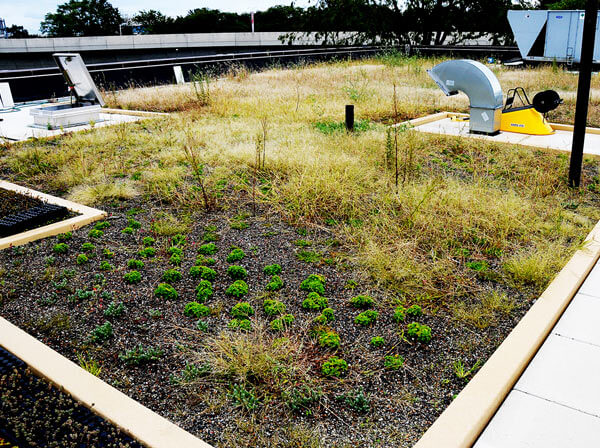By Ivan Pereira
The city has taken another step in cleaning up Jamaica Bay and making one of its water treatment facilities more environmentally friendly.
Green roofs were installed at the Jamaica Wastewater Treatment Plant Friday and the city Department of Environmental Protection said the upgrade will go a long way toward curbing the excess storm water that fills into Jamaica Bay.
The roof, which is made out of plants and materials such as stonecrop and mountain sedum, will absorb 13,000 gallons of water a year, according to DEP Commissioner Carter Strickland.
“This green roof will capture thousands of gallons during storms, preventing the same amount of untreated wastewater from flowing into the largest urban wildlife refuge in the country,” he said in a statement.
The excess storm water discharges into Jamaica Bay, which is home to 100 fish species, 325 bird species and hundreds of other mammals, reptiles and insects. Over the last couple of decades, the saltwater marshlands at the ecosystem have been dying due to a large amount of hydrogen in the water, which originates from the wastewater plants, and the city has pledged to stop the problem.
Last year the mayor announced that the city would be investing more than $100 for 10 years’ worth of projects to upgrade the wastewater treatment facilities and reduce the nitrogen in the bay.
During heavy storms, the Jamaica plant discharges both storm and sewage water into the bay after its storm sewage tanks reach capacity. The plants on top of the facility use specially designed soil that sits on a drainage layer and collects the rainwater.
The plants can survive drought and other severe weather conditions and the roof also absorbs ultraviolet light that will improve insulation, cool the interior and increase energy efficiency, according to Strickland.
This is not the only green initiative created to help the bay.
Last year the DEP planted eelgrass and introduced oysters in the water to help oxidize the ecosystem and counter the nitrogen.
“Green infrastructure is one of the most effective ways to preserve Jamaica Bay for generations to come,” Strickland said.
Reach reporter Ivan Pereira by e-mail at ipereira@cnglocal.com or by phone at 718-260-4546.
































